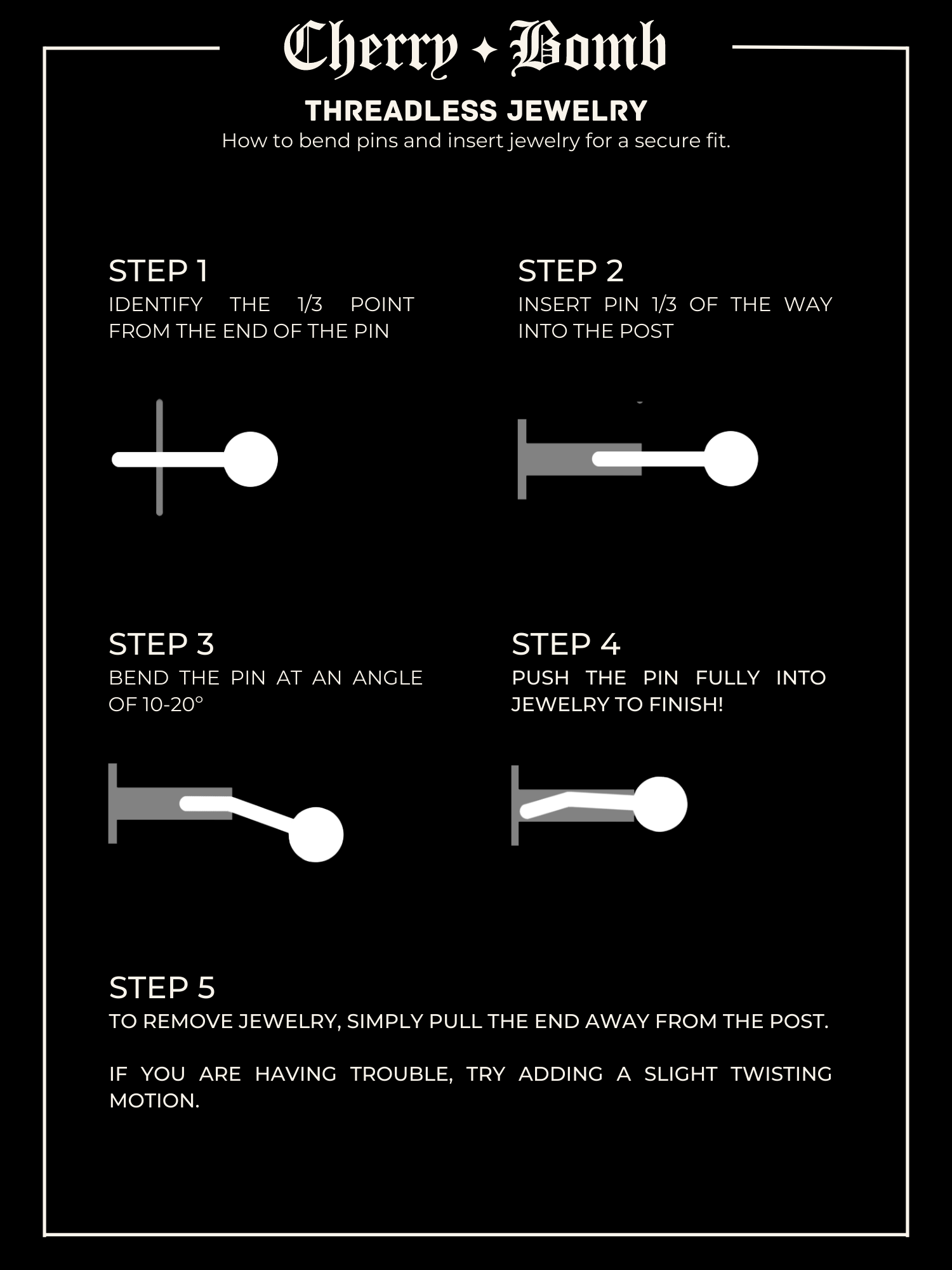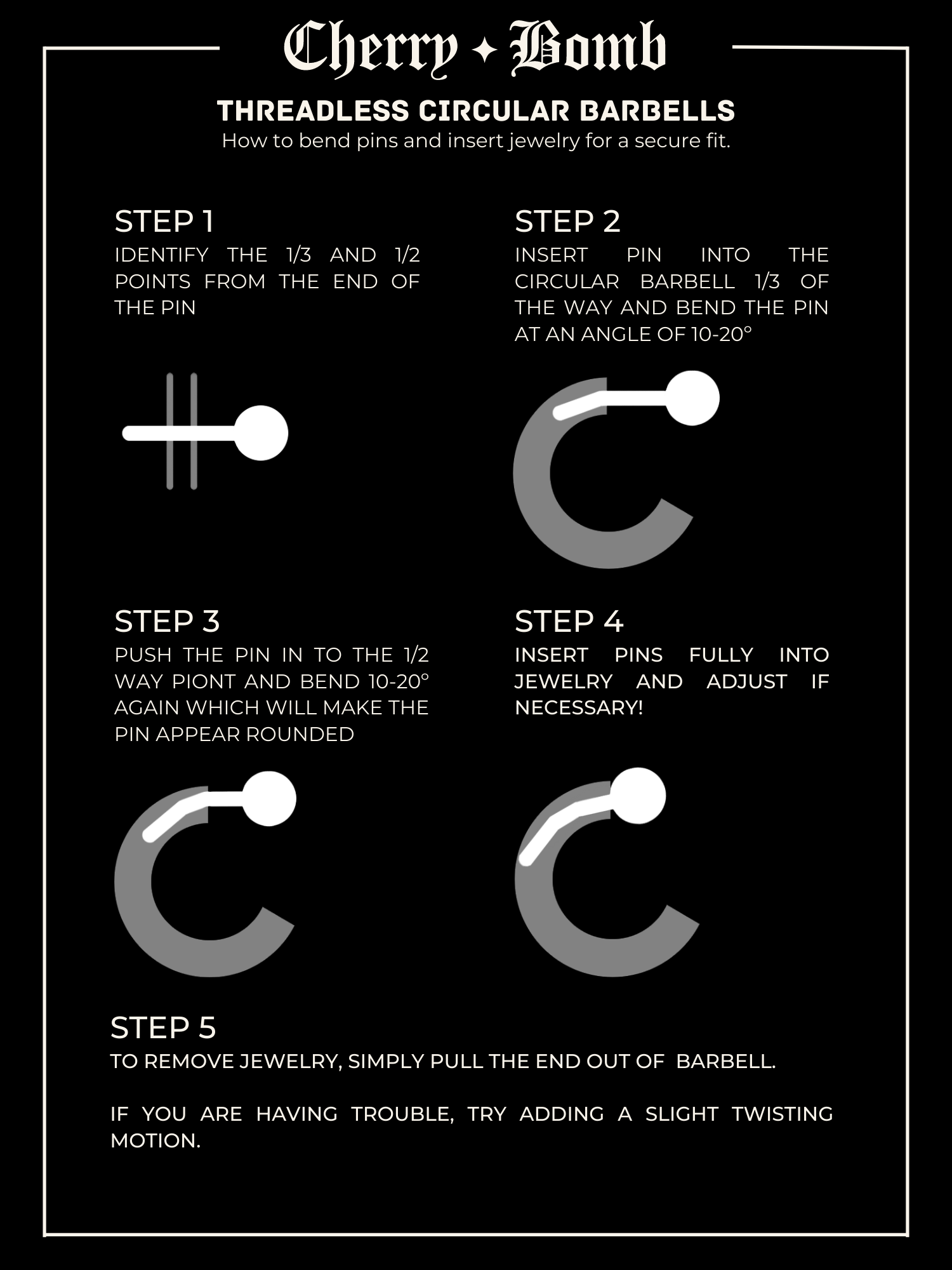Threadless Jewelry: The Ins and Outs
When it comes to piercing jewelry, a wide range of choices are available, each with unique appeal. Although threadless jewelry has been around since 1997, it has recently seen a lot of popularity in traditional jewelry shops. Unlike traditional jewelry with screws or threading, threadless jewelry employs a simple yet ingenious design that offers many benefits. In this blog post, we'll delve into the captivating world of threadless jewelry and explore the advantages that have captured the hearts of enthusiasts worldwide.
Easy and Secure Insertion: The primary advantage of threadless jewelry lies in its easy and secure insertion process. Instead of dealing with tiny screws or intricate threading, threadless jewelry uses a post with a slight bend that holds the decorative top in place. This ingenious design eliminates the need for twisting and screwing, making changing or inserting jewelry a breeze. Even individuals with limited dexterity can effortlessly change their jewelry without the risk of losing tiny parts.
Versatility and Customization: Threadless jewelry opens the doors to a world of versatility and customization. The threadless posts and decorative tops come in various shapes, sizes, and materials, catering to every style and taste. The options are limitless, from elegant gemstones to intricate designs and charming motifs. This adaptability allows wearers to express individuality and create unique combinations to match different outfits, occasions, or moods.
Enhanced Comfort and Safety: Traditional jewelry with screws or threading may have exposed ends, which can cause discomfort or even injury to the wearer or others. In contrast, threadless jewelry features smooth, rounded ends on the post and decorative top, ensuring a snug fit without sharp edges. This enhanced comfort reduces irritation and soreness and minimizes the risk of snagging on clothing or hair, making it an ideal choice for everyday wear.
Easy Cleaning and Maintenance: Threadless jewelry is straightforward to clean and maintain. The absence of complicated threading or intricate components means no tight spaces for accumulating dirt and debris. Simple cleaning with mild soap and water or a saline solution is sufficient to keep the jewelry fresh and sanitary.
Reduced Risk of Allergic Reactions: For individuals with metal sensitivities, threadless jewelry offers a safer alternative. Many threadless jewelry options are made from hypoallergenic materials, such as titanium, niobium, or solid gold. These materials are less likely to cause allergic reactions, making threadless jewelry a viable choice for a broader range of people.
Threadless Jewelry How to
Prepare Your Hands and Jewelry: Wash your hands thoroughly with soap and water or put on disposable gloves to ensure a clean environment for handling your jewelry. Ensure your threadless post and decorative top are also clean and free of debris.
Identify the Bending Area: If you need to bend the post to fit your specific piercing, locate the area of the post that needs adjustment. Typically, the bending is required near the end of the post that will be inside your piercing.
Use Gentle Pressure: Apply gentle and gradual pressure to the post in the direction you need it to bend. Be careful not to exert too much force, as excessive pressure may cause the post to break or become misshapen.
Check the Fit: As you bend the post, periodically check the fit of the jewelry in your piercing. The goal is to achieve a comfortable and secure fit without causing any discomfort or irritation.
Test the Decorative Top: Once you are satisfied with the bend in the post, attach the decorative top to the post and check that it sits securely. Ensure that the decorative top does not wobble or become loose after bending.
Clean and Care: After you have successfully bent the threadless jewelry to fit your piercing, clean the area around your piercing and the new jewelry using a clean saline solution or piercing aftercare solution. Follow any aftercare instructions your piercer provides to promote healing and prevent infection.
If you need help bending your jewelry or encountering any difficulties during the process, seek assistance from a professional piercer to ensure the safety and integrity of your jewelry and piercing.


